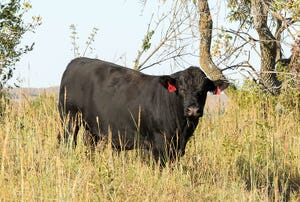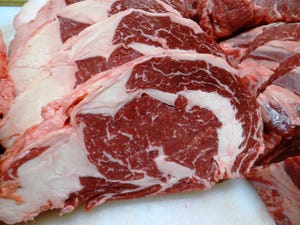Tax Code Offers Some Flexibility During Drought
The tax implications of cattle sales caused by a drought are fairly straightforward. Two different tax treatments apply, says Dan Childs, economist and senior agricultural consultant for the Noble Foundation, Ardmore, OK.
August 10, 2011

The tax implications of cattle sales caused by a drought are fairly straightforward. Two different tax treatments apply, says Dan Childs, economist and senior agricultural consultant for the Noble Foundation, Ardmore, OK.
The first option has to do with draft, breeding or dairy animals, and is addressed under IRS Code Section 1033(e). If a producer sells more animals than normal, he or she can elect not to recognize any gain if the proceeds are used to purchase replacement livestock within two years of the end of the tax year in which the sale takes place. The time period is extended to four years when the sale of animals in excess of normal was in a natural-disaster-designated area.
The new livestock purchased must be used for the same purpose as those sold. Only the additional animals sold in excess of normal sales can be replaced without recognition of gain. The entire sales proceeds of the excess animals must be reinvested in at least the same number of animals as sold for no gain to be recognized.
If sale proceeds are reinvested in exactly the same number of animals, then the new animals will have the same basis as the animals sold. If a lesser amount than the sale proceeds is invested, a portion of the gain will need to be recognized.
For example, if a producer normally sells 10 cows, but sold 25 this year, the gain on the 15 would not have to be recognized. If the 15 head were raised and sold for $15,000, all the $15,000 is gain. If another 15 head are purchased within four years, but for $13,500, then $1,500 ($15,000 - $13,500) of gain would need to be recognized.
If more than the sale proceeds is invested, then the difference is added to the old basis to establish the new basis. A producer can choose to not recognize the gain from the sale of animals in excess of the normal amount of sales by attaching a statement with the required information to their tax return.
The second option, from IRS Code Section 451(e), applies to all livestock and allows for a one-year postponement of reporting the sale proceeds from livestock sold due to drought in excess of the number ordinarily sold. The animals don’t have to be replaced as in option one. Reporting of sale proceeds is simply deferred for one year. A document containing the necessary information must be attached to a producer's tax return indicating that an election has been made to defer the gain.
However, several requirements must be met:
Unlike the first option, the producer's area must have received a natural disaster declaration.
A producer's principal business must be farming, which is generally defined as a person who receives more than half of their gross income from farming.
A producer must use the cash method of accounting.
A producer must show that the livestock would normally have been sold in the following year.
The weather-related conditions that caused an area to be declared eligible for federal assistance must have caused the sale of livestock.
Even though none of the abovementioned provisions provide what we really need – a good rain – they do offer assistance for some producers. Contact your tax preparer to get information regarding your individual situation. Income, expense and production records will be helpful in meeting the requirements for any of these programs.
For more, go to www.noble.org/Ag/news_views/2011/August.html.
You May Also Like



